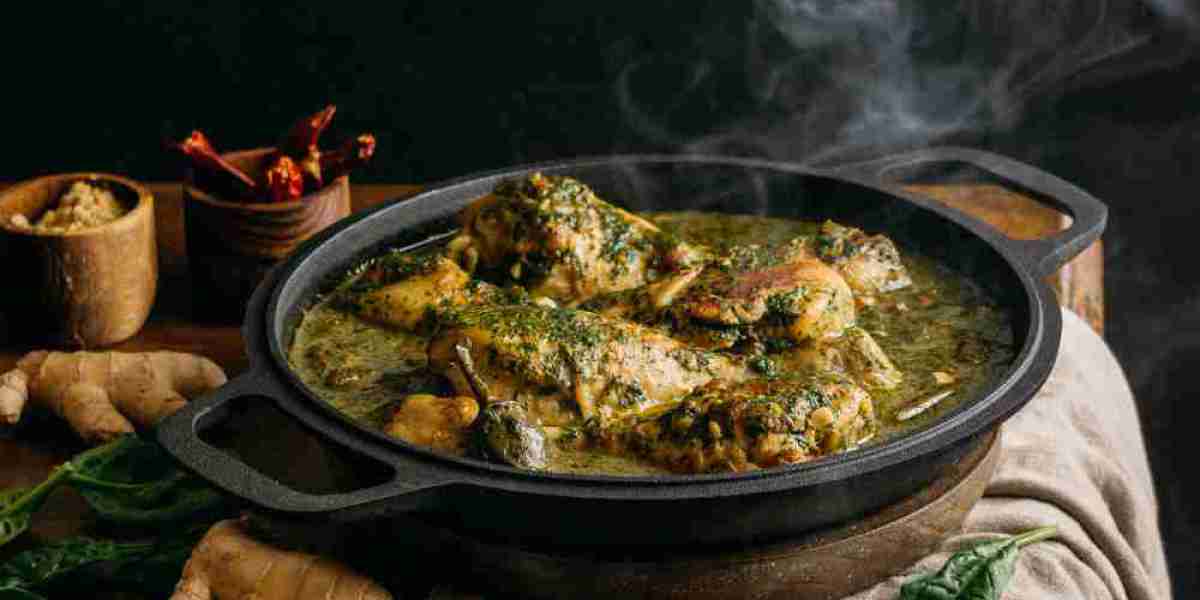Introduction
Mutton Korma, a regal dish hailing from the Mughal era, stands as a testament to India's rich culinary heritage. Its rich, creamy gravy, infused with aromatic spices and tender pieces of mutton, is a symphony of flavours that tantalizes the taste buds. This blog post delves into the depths of this iconic dish, unravelling its secrets and guiding you through its preparation.
The journey to a perfect Mutton Korma begins with a careful selection of ingredients. The meat, preferably a tender cut like leg or shoulder, is marinated in a flavorful blend of yoghurt, ginger-garlic paste, and aromatic spices. This marinade not only tenderizes the meat but also infuses it with a delightful aroma.
The heart of the dish lies in its aromatic gravy. A medley of cardamom, cloves, cinnamon, and black peppercorns forms the foundation of the spice blend. These whole spices are often lightly crushed before being added to the gravy, releasing their essential oils and enhancing the overall flavour profile. Onions and tomatoes, the backbone of the gravy, are caramelized and pureed, respectively, to add depth and sweetness to the dish.
Milk, cream, and cashew paste are the key ingredients that lend the gravy its velvety texture and rich, nutty flavour. The gravy is simmered slowly, allowing the flavours to meld together and the spices to infuse the liquid. To elevate the dish to new heights, chefs often add a touch of saffron and kewra water, imparting a delicate floral note and a subtle, sweet fragrance.
Aromatic Symphony
The heart of Mutton Korma lies in its aromatic blend of spices. A medley of cardamom, cloves, cinnamon, and black peppercorns form the foundation, imparting a warm, fragrant note to the dish. These whole spices are often lightly crushed before being added to the gravy, releasing their essential oils and enhancing the overall flavour profile.
The Art of Marinating
Marinating the mutton is a crucial step in elevating its tenderness and infusing it with aromatic spices. A marinade typically consists of yoghurt, ginger-garlic paste, and a blend of spices like turmeric, red chilli powder, and garam masala. The yoghurt acts as a tenderizer, breaking down the meat fibres and making it more succulent. The marinade also imparts a subtle tanginess to the dish, balancing the richness of the gravy.
The Gravy: A Creamy Indulgence
The gravy of Mutton Korma is the epitome of culinary indulgence. It is typically prepared using a combination of milk, cream, and cashew paste. The milk and cream lend a velvety texture to the gravy, while the cashew paste adds a nutty richness. The gravy is simmered slowly, allowing the flavours to meld together and the spices to infuse the liquid.
The Role of Onions and Tomatoes
Onions and tomatoes form the backbone of the gravy, providing a base for the spices to cling to. The onions are typically caramelized until golden brown, releasing their natural sweetness. The tomatoes are pureed and added to the gravy, imparting a tangy, acidic note that balances the richness of the dish.
The Finishing Touches
To elevate the Mutton Korma to new heights, chefs often add a touch of saffron and kewra water. Saffron, the world's most expensive spice, imparts a delicate floral note to the dish. Kewra water, extracted from the Pandanus flower, adds a subtle, sweet fragrance. These ingredients, though used sparingly, elevate the dish to a culinary masterpiece.
The Regional Variations of Mutton Korma
While the core ingredients and techniques remain consistent across different regions of India, regional variations of Mutton Korma can be found. For instance, in the northern regions, the gravy is often enriched with ghee, while in the southern regions, coconut milk is sometimes added for a unique flavour profile.
The Cultural Significance of Mutton Korma
Mutton Korma is more than just a dish; it is a cultural symbol, reflecting the rich heritage of Indian cuisine. It is often served at special occasions, weddings, and festivals, symbolizing celebration and prosperity. The dish's royal origins and its association with the Mughal era add to its mystique and allure.
Tips for Perfect Mutton Korma
Choose the Right Cut of Meat: Opt for a tender cut of mutton, such as leg or shoulder, to ensure a melt-in-your-mouth experience.
Marinate Thoroughly: Marinating the meat for at least 2-3 hours, or even overnight, will enhance its flavour and tenderness.
Caramelize the Onions: Caramelizing the onions slowly until they turn golden brown is a key step in developing the depth of flavour in the gravy.
Simmer, Don't Boil: Simmering the gravy slowly allows the flavours to meld together and the spices to infuse the liquid.
Balance the Flavors: The balance of sweet, sour, and spicy flavours is crucial in Mutton Korma. Adjust the amount of sugar, yoghurt, and chilli powder to achieve your desired taste.
Garnish Beautifully: A sprinkle of fresh coriander leaves and a dollop of cream can elevate the presentation of your Mutton Korma.
Conclusion
Mutton Korma is a dish that transcends borders and cultures. Its rich, aromatic flavours and creamy texture have captivated palates for centuries. By following the tips and techniques outlined in this blog post, you can recreate this culinary masterpiece in your own kitchen. So, gather your ingredients, don your chef's hat, and embark on a culinary journey to the heart of India.














